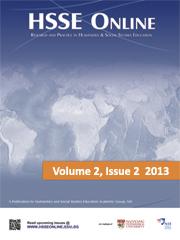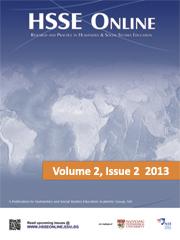Syazwani Binte Amrun (Raffles Girls’ School)
Keywords
History
Junior College
Singapore Representation
Significance
Concept
This study was designed to explore how students in a secondary school make sense about the significance of different representations of Singapore, and to examine their ideas on what they conceived as icons of Singapore. The research was conducted in a premier all-girls’ school in Singapore. The data used in this study was derived from semi-structured interviews that included both a task requiring students to choose from among a set of thirty captioned images, and a set of questions designed to elicit their understanding of significant representations of Singapore. Twelve students, aged 14 to 15 years old, were interviewed in groups of either three or four per group.
The key question guiding this study was “What is the icon of Singapore today?” In order to address this question, students were expected to work with the concept of significance in history. Although the question did not specifically require students to refer to their knowledge of Singapore’s history or to have them make connections with representations of Singapore’s past, student responses may shed light on the way they think about the country’s past, and enable us to build a picture about how they perceive their identity and the country’s heritage. By identifying items they believed were iconic representations of Singapore, students’ responses appeared to reveal the kind of values they held about the country and the means by which they identified themselves as Singaporeans. The findings from this study will be useful for educators in planning programmes that would enhance our students’ understanding of specific icons and cultivate in them a deeper appreciation for Singapore.
Research Methods
Setting and Participants
This study involved interviews with twelve students from three different Year Three classes, with the age of participants ranging from 14 to 15 years old. These students were selected to participate in this study as they had all completed one year of studying Singapore’s history in Year Two. The decision to select Year Three students also was made with the assumption that participants would have a basic knowledge of Singapore’s history as their understanding of the milestones in Singapore’s history may affect their perception of what they conceived as iconic of Singapore. All the students involved in the study were Singapore citizens except for two who were Singapore Permanent Residents (PR). The students selected consisted of both high and average achievers within their history classes, and the selection also took into consideration the ethnic backgrounds of the participants. Students were interviewed in fours largely due to convenience as these interviews were conducted during breaks in their curriculum time. The first group of students consisted of two ethnic Chinese Singaporeans and two ethnic Indians (one of whom was a PR from India); the second group of students consisted of 4 ethnic Chinese Singaporeans; and the last group consisted of one ethnic Chinese Singaporean student and three ethnic Malay students (one of whom was a PR from Indonesia). For more information of the participants, refer to Appendix A.


